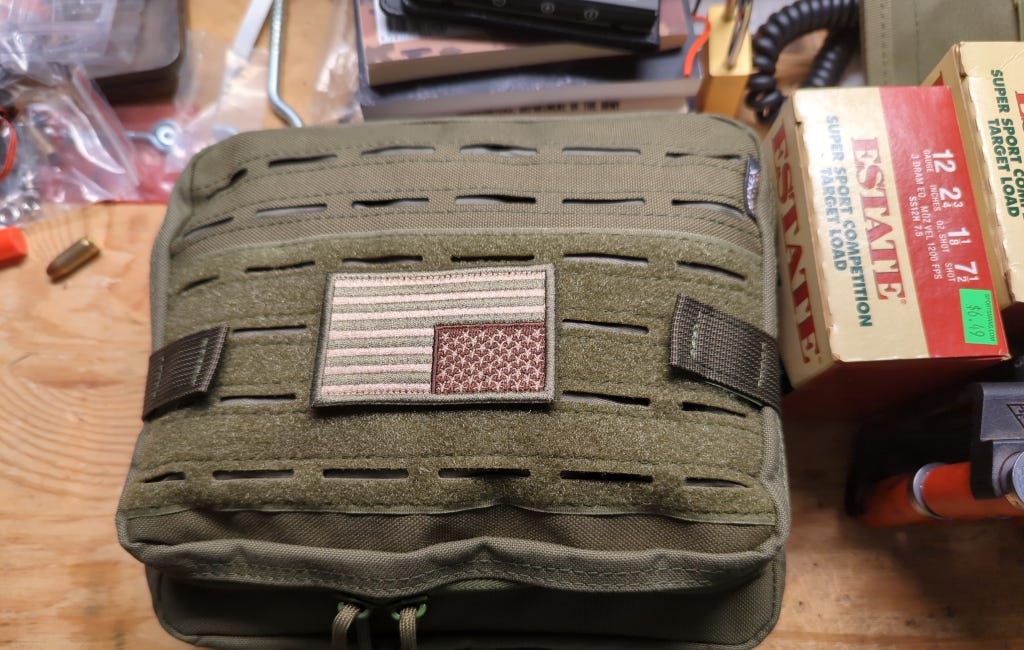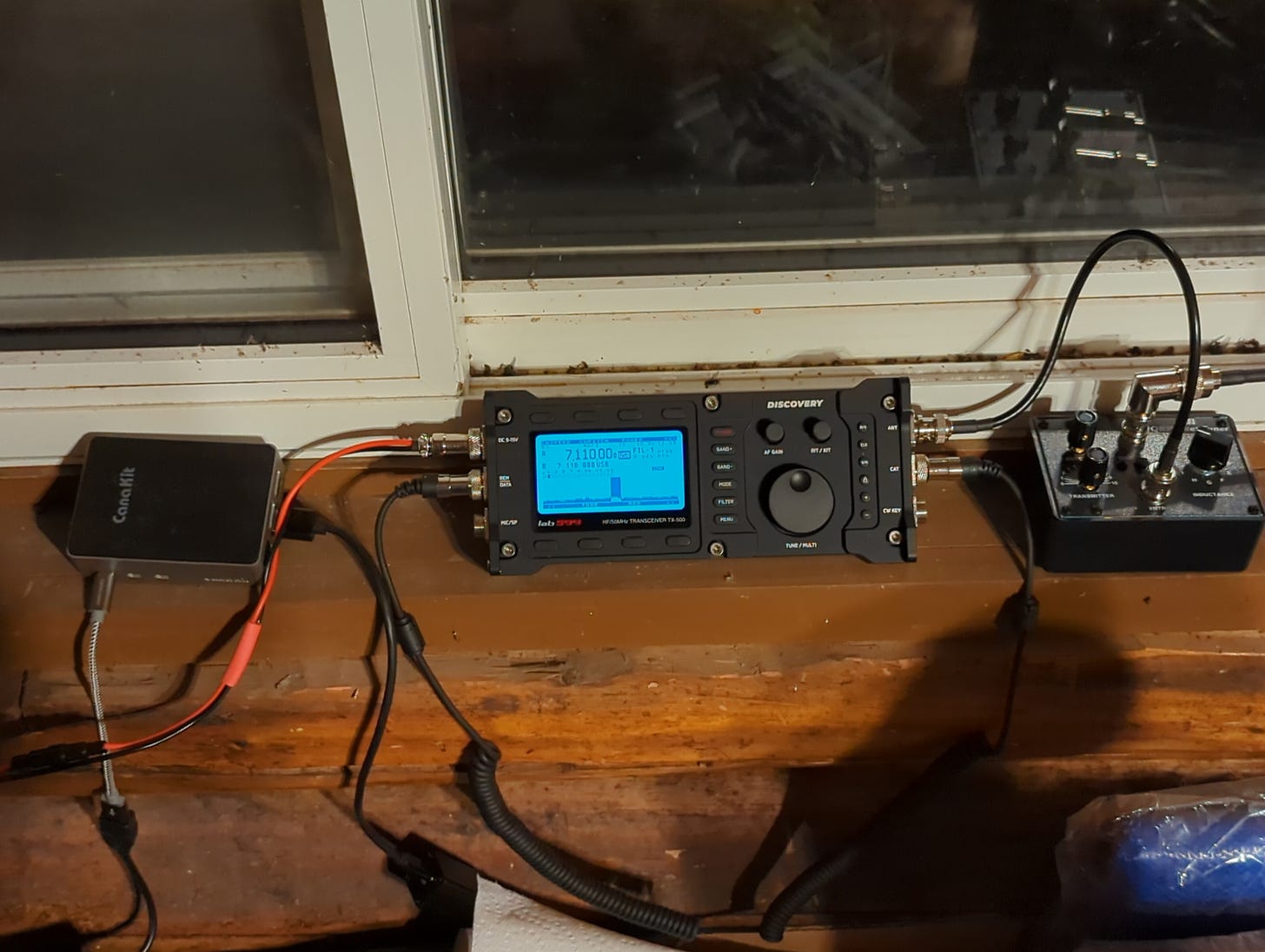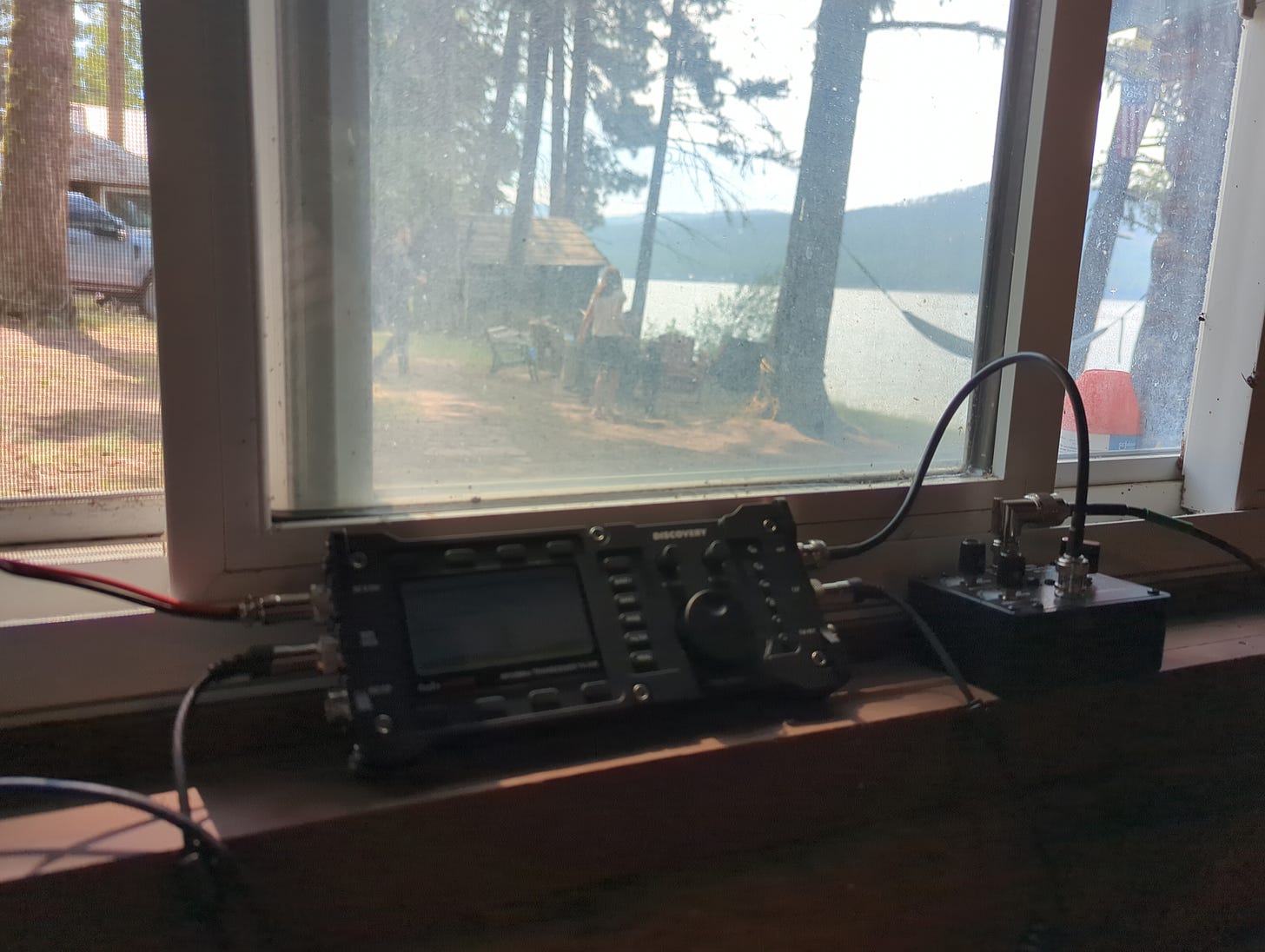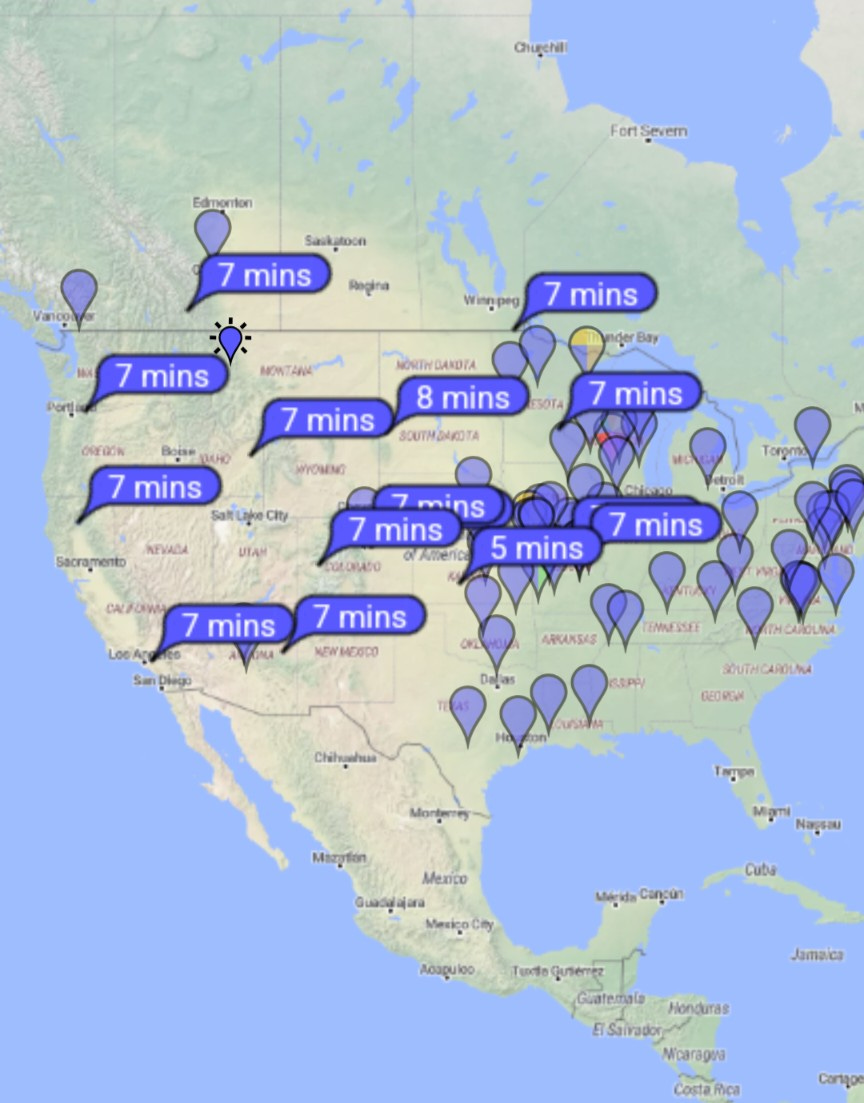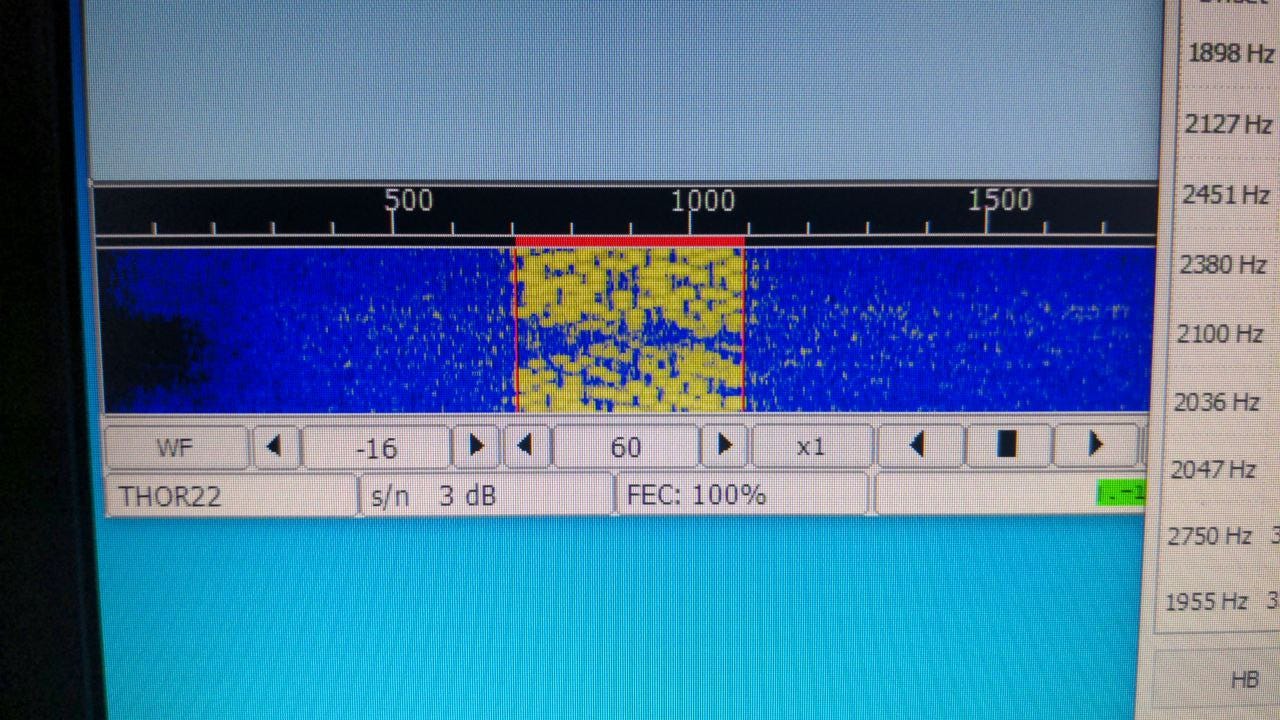In a prolonged emergency, there is likely to be a real need to have a nearly full time radio presence so that you can receive information from around the country or a team out on patrol in the field. The annual TREX exercise put on by AmRRON is a weekend long test of your ability to operate off grid, but what issues arise if one operates this was for weeks? Or for months?
My annual trip to the family cabin in Montana seemed like an excellent opportunity to test how systems perform, degrade, or fail in an environment where you have mice and moose, but no grid (power or internet) over a period of more than the typical afternoon operating portable.
Similar to years past, I set up my portable radio kit:
Lightweight Field Comms Kit
Complete all band digital communications kit in under 8 lbs? Here it is:
Along with the raspberry Pi for low power field operation:
Raspberry Pi low power off grid radio base station.
Let’s say the grid goes down, and doesn’t come back up. If the fires in Hawaii taught us anything it’s that information will be a requirement with life or death consequences, and power will be your chief limitation to fulfilling that requirement using HF radio. A comms schedule is a must, but what about emergency messages during the night or while you a…
This set up allows me to run on very little power and then periodically VNC into the Pi with the laptop. And all this can be easily supported by a small battery bank and replenished by a 60 watt solar panel placed on the cabin roof.
I chose to bring along a 50’ coax this time and set up the Chameleon Micro at approx 40’ feeding a 73’ wire that sloped downward and away from the cabin, pointing south. The braid of the 50’ coax then became the counterpoise (all antennas are dipoles!) And the coax's integrated choke was at the tuner end of the antenna to prevent RFI.
This configuration worked quite well and was solid in spite of rain, thunderstorms, 90 degree heat, and wind gusts up to 50 mph that all came through in the week and a half it was up.
After a few days however, I noticed increasingly significant time drift which required correction to keep JS8CALL usable for communication.
To counteract this, you can select “show time drift controls” under the view menu to access options for manipulating your time drift. What I found helpful was to wait with TX off for a station to send a heartbeat, and then select automatic time drift with it set up to stop after 2 decodes. This usually got me within 500 ms of most other stations relatively quickly.
This success however is predicated on everyone else having accurate time from the grid. While it doesn’t matter what time everyone uses as long as its the same time, the question that arises is: in a truly extended grid down scenario what percent of operators will be able to get time synced with the rest of the group? If that number is not high, and I will tell you that if you do not practice this then it will be much harder than you expect, then the efficacy that JS8CALL enjoys will be depreciated accordingly.
While at the cabin the bands struggled for a few days due to the arrival of a solar flare, and numerous stations were looking for relays of the weekly AmRRON intelligence brief.
As a QRP station I left the relays to the others with more power but when a station I have worked with before in the far North of WA state couldn’t get fills on the file I decided to ping him on JS8 to see what the path was like. When his station came back with a +6 I decided to give it a try. MFSK32 might be the standard for file transfer, but low power and poor conditions made me sure that it would be a waste of power. The Thor modes seem very robust for weak signals so I decided to give Thor 22 a try. While he reported that the print seemed good on screen, and another station on the Oregon/California border had great copy on his waterfall:
The receiving station only picked up a few of the roughly 15 blocks he needed in FLAMP. Switching to MFSK16 I was able to fill his remaining blocks on the first pass.
Thor wasn’t a success, but it was a great opportunity to try out a different mode in poor conditions and see what it could do.
Operating without grid for a prolonged period of time presents a few challenges for the operator. And to me it solidifies the FLDIGI suite as the primary tool for transferring information in an emergency. But every crisis is different and that’s why we need to practise and train with all the tools we have available.





